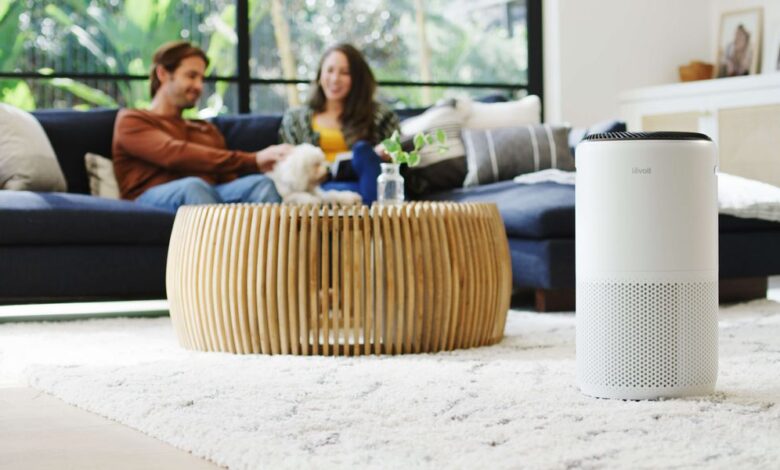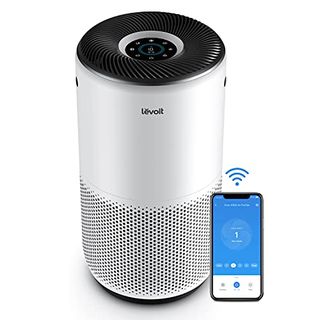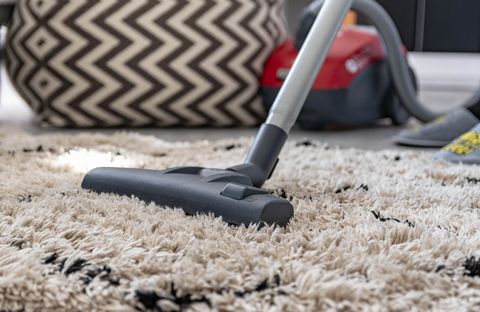These 6 Common Allergens and Irritants Might Be Lurking in Your Home

There’s been a lot of talk about toxins in today’s homes, polluting the air and contaminating surfaces, which is why it comes as no surprise that the current number of allergy sufferers in the U.S. is rather high: more than 50 million, according to Asthma and Allergy Foundation of America (AAFA). And not to freak you out or anything, but this can be a problem for you even if you’ve never had allergies before. That’s because changes in your body, or in the load level of a certain allergen in the home, could trigger the onset of symptoms. (The sniffles that won’t go away? It might not be a summer cold. The sudden outbreak of hives? Maybe not a sweat rash.)
So what can you do about it? According to Rachel Rothman, Chief Technologist at the Good Housekeeping Institute, the key to clearing the air in your home is to control the main culprits at their source and capture any that remain. To help you get a handle on this, we asked Rothman, along with experts at AAFA, Allergy Standards, and Levoit (a company known for its ultra-effective air purifying products), to give us the dirt on exactly how to eliminate six biggies.
Pollen
The gist: If you’re allergic to pollen, you definitely know it. Anytime the trees, flowers, and grasses where you live give off that fine powder, your throat itches and your nose starts to tickle.
The fix: There’s no stopping Mother Nature, so the goal here is to keep as much pollen as possible from entering the home. “On those high pollen count days, keep the windows closed, use the AC, leave your shoes and outerwear at the door, and take a shower before going to bed,” says Kenneth Mendez, CEO of AAFA. Since you can’t keep out every last pollen particle, consider using an air purifier as another line of defense. The Levoit VeSync Core 400S True HEPA Smart Air Purifier, which earned the Good Housekeeping Seal, is suited to rooms up to about 400 square feet and has connected technology that lets you monitor your home’s real-time air quality via the smart phone app.
VOCs
The gist: Short for volatile organic compounds, VOCs are chemicals found in many products used to build, maintain, and clean homes. Short-term exposure can cause symptoms like headaches and itchy eyes, while chronic exposure over many years can lead to cancer, liver damage, and more.
The fix: The best defense against VOCs is keeping them out of the house in the first place. Look for cleaning products that don’t contain harmful chemicals. Do the same when tackling home improvement projects, since VOCs are common in a lot of remodeling materials, from paint to flooring to and insulation. The Allergy Standards website keeps a running list of certified products for all of these categories and more, to help identify safe options.
Dust mites
The gist: One of the most common household allergens, dust mites thrive in warm, humid environments. They love beds, where they feast on your dead skin. (Gross, but true.)
The fix: Dust mites are done in by high heat, so it’s important to wash your sheets and pillowcases weekly in hot water, preferably 130°F or higher; your dryer’s high-heat cycle will also zap the critters. Using protective covers for your mattress and pillows can prevent dust mites and animal dander from accumulating too.
Smoke
The gist: It goes without saying that, if someone in your home is still smoking indoors, despite all the known health effects of secondhand smoke (heart disease, strokes, lung cancer), it’s time for a serious sit-down. But what you might not know is that there are also plenty of other sources of potentially harmful smoke in the home, including cooking, fireplaces, and candles.
The fix: You can’t avoid cooking, of course, so proper ventilation is key, ideally with a range hood that vents smoke and fumes to the outside. If you can’t resist the crackle and pop of a wood-burning fire, try to use the fireplace sparingly, only burn seasoned wood, and have your chimney annually cleaned by a certified chimney sweep to get rid of creosote, which can cause skin, eye, or respiratory irritation. (Since the residue is highly combustible, it can also lead to chimney fires.)
Go easy on the candles too—especially scented varieties, since they may contain chemicals. Not only that, but “scented candles can also inadvertently cover up another trigger, like mold, creating a double-whammy scenario,” says Dr. John McKeon, a former ER doctor and CEO/Founder of Allergy Standards.
Mold spores
The gist: Like pollen, mold is a part of nature, but you don’t want it thriving in your home (of course). Exposure can cause a slew of allergic responses, such as sneezing, runny nose, red eyes, and skin rash.
The fix: Mold is another allergen that loves moisture, which is why the bathroom and basement are common sources of it. To prevent spores from blooming behind walls, under floors, and inside cabinets, fix any leaks promptly, and if you have a bathroom fan, get in the habit of letting it run for at least 15 minutes after showering. (Another option: Leave the window open to help bring in fresh air.) As for the basement? If it’s damp down there, use a dehumidifier to keep humidity levels below 60 percent—that’s the point at which mold starts to thrive, according to the U.S. Environmental Protection Agency.
Pets and Pests
The gist: Those furry and feathered friends you willingly bring into your home are wonderful in every way, but when they hang out in the bedroom or on your soft furnishings, the dander, saliva (and, ew, sometimes urine) that’s left behind can trigger allergic reactions, so it’s best to limit those areas if and when you can. As for unwelcome critters, rodents and cockroaches are two important ones to watch for, because their droppings are serious allergens.
The fix: You can cut down on pet fur and dander by vacuuming regularly (as in every few days), ideally with a vacuum that has a sealed HEPA filter, which can capture even the finest contaminants. “If you like to groom your pets at home and you have animal allergies, wear a mask while you do it,” adds McKeon.
Insects and other pests require a different approach. Roaches are similar to mold and dust mites in their love of moisture, so fixing leaks and correcting high humidity will help contain them, and sealing gaps and cracks around doors and foundation walls can stop rodents from entering. Finally, just about all pests love clutter and food remnants, so healthy indoor air is one more reason to keep a clean house.
This content is created and maintained by a third party, and imported onto this page to help users provide their email addresses. You may be able to find more information about this and similar content at piano.io
Source link







